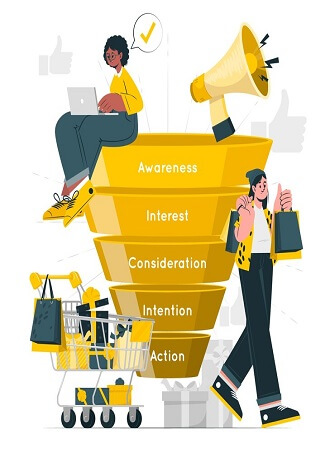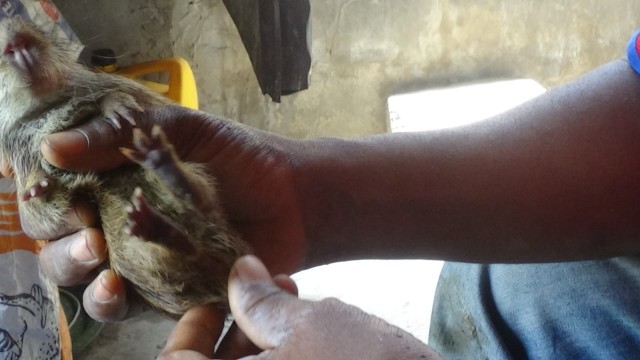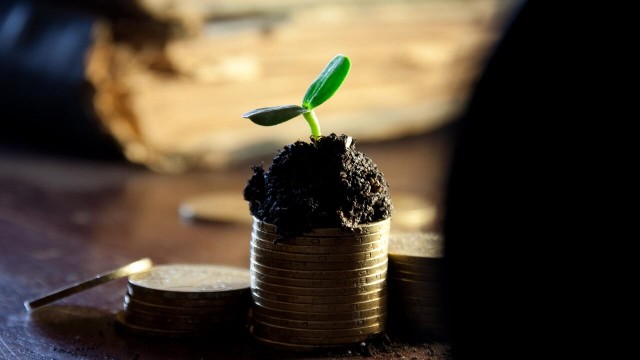
Branding and Marketing In The Digital Age
November 10, 2024, 9:37 am
The internet has upended how consumers engage with brands. It is transforming the economics of marketing and making obsolete many of the function’s traditional strategies and structures.
For marketers, the old way of doing business is unsustainable.
Branding and Marketing In The Digital Age
Consider this: not long ago, a car buyer would methodically pare down the available choices until he arrived at the one that best met his criteria. A dealer would reel him in and make the sale. The buyer’s relationship with both dealer and the manufacturer would typically dissipate after the purchase.
Consumer Buying Process In The Digital Age
But today, consumers are promiscuous in their brand relationships: they connect with myriad brands—through new media channels beyond the manufacturer’s and the retailer’s control or even knowledge— and evaluate a shifting array of them, often expanding the pool before narrowing it.
After a purchase these consumers may remain aggressively engaged, publicly promoting or assailing the products they’ve bought, collaborating in the brand’s development, and challenging and shaping their meaning.
Consumers still want a clear brand promise and offerings they value. What changed is when—at what touch points—they are most open to influence, and how you can interact with them at those points.
In the past, marketing strategies that put the lion’s share of resources into building brand awareness and then opening wallets at the point of purchase worked pretty well. But touch points have changed in both number and nature, requiring a major adjustment to realign marketer’s strategy and budgets with where consumers are actually spending their time.
Block That Metaphor
Marketers have long used the famous funnel metaphor to think about touch points: consumers would start at the wide end of the funnel with many brands in mind and narrow them down to a final choice.

Companies have traditionally used paid-media push marketing at a few well-defined points along the funnel to build awareness, drive consideration, and ultimately inspire purchase. But the metaphor fails to capture the shifting nature of consumer engagement.
In the June 2009 issue of McKinsey Quarterly, my colleague David Court and three coauthors introduced a more nuanced view of how consumers engage with brands: the ‘consumer decision journey (CDJ). They developed their model from a study of the purchase decision of nearly 20,000 consumers across five industries—automobiles, skin care, insurance, consumer electronics, and mobile telecom—and three continents.
Their research revealed that far from systematically narrowing their choices, today’s consumers take a much more iterative and less reductive journey of four stages: consider, evaluate, buy, and enjoy, advocate, bond.
Consider
The journey begins with the consumer’s top-of-mind consideration set: products or brands assembled from exposure to ads or store displays, an encounter at a friend’s house, or other stimuli.

In the funnel model, the consider stage contains the largest number of brands, but today’s consumers, assaulted by media and awash in choices, often reduce the number of products they consider at the outset.
Evaluate
The initial consideration set frequently expands as consumers seek input from peers, reviewers, retailers, and the brand and its competitors. Typically, they’ll add new brands to the set and discard some of the originals as they learn more and their selection criteria shift.

Their outreach to marketers and other sources of information is much more likely to shape their ensuing choices and marketers’ push to persuade them
Buy
Increasingly, consumers put off a purchase decision until they are actually in a store—and, they may be easily dissuaded at that point. Thus point of purchase—which exploits placement, packaging, availability, pricing and sales interactions—is an ever more powerful touch point

Enjoy, Advocate, Bond
After purchase, a deeper connection begins as the consumer interacts with the product and with new online touch points. More than 60% of consumers of facial skin care products, conduct online research about the products after purchase—a touch point entirely missing from the funnel.
When consumers are pleased with a purchase, they’ll advocate for it by word-of-mouth, creating fodder for the evaluations of others and invigorating a brand’s potential.

Of course, if a consumer is disappointed by the brand, she may sever ties with it—or worse. But if the bond becomes strong enough, she’ll enter an enjoy-advocate buy loop that skips the consider and evaluate stages entirely.
Marketing and Building Brand Loyalty In The Digital Age
Although the basic premise of the consumer decision journey may not seem radical, its implications for marketing are profound. Two in particular stand out.
First, instead of focusing on how to allocate spending across media—television, radio, online and so forth—marketers should target stages in the decision journey. The research my colleagues and I have done shows a mismatch between most marketing allocations and the touch points at which consumers are best influenced.
Our analysis of dozens of marketing budgets reveals that 70% to 90% of spend goes to advertising and retail promotions that hit consumers at the consider and buy stages. Yet consumers are often influenced more during the evaluate and enjoy-advocate-bond stages.
In many categories the single most powerful impetus to buy is someone else’s advocacy. Yet many marketers focus on media spend (principally advertising) rather than on driving advocacy. They coolest banner ads, best search buys, and hottest viral videos may win consideration for a brand, but if the product gets weak reviews—or worse, isn’t even discussed online—it’s unlikely to survive the winnowing process.
The second implication is that marketers’ budgets are constructed to meet the needs of a strategy that is outdated. When the funnel metaphor reigned, communication was one-way, and every interaction with consumers had a variable media cost that typically outweighed creative’s fixed cost.
Management focused on ‘working media spend’ – the portion of a marketing budget devoted to what are today known as paid media.
This no longer makes sense. Now marketers must also consider owned media (that is, the channels a brand controls, such as websites) and earned media (customer-created channels, such as communities of brand enthusiasts). And an increasing portion of the budget must go to ‘nonworking’ spend—the people and technology required to create and manage content for a profusion of channels and to monitor or participate in them.
[Editorial Note: This article was written by David C. Edelman, a global coleader of the Digital Marketing and Sales practice at McKinsey & Company]












Share This Article: